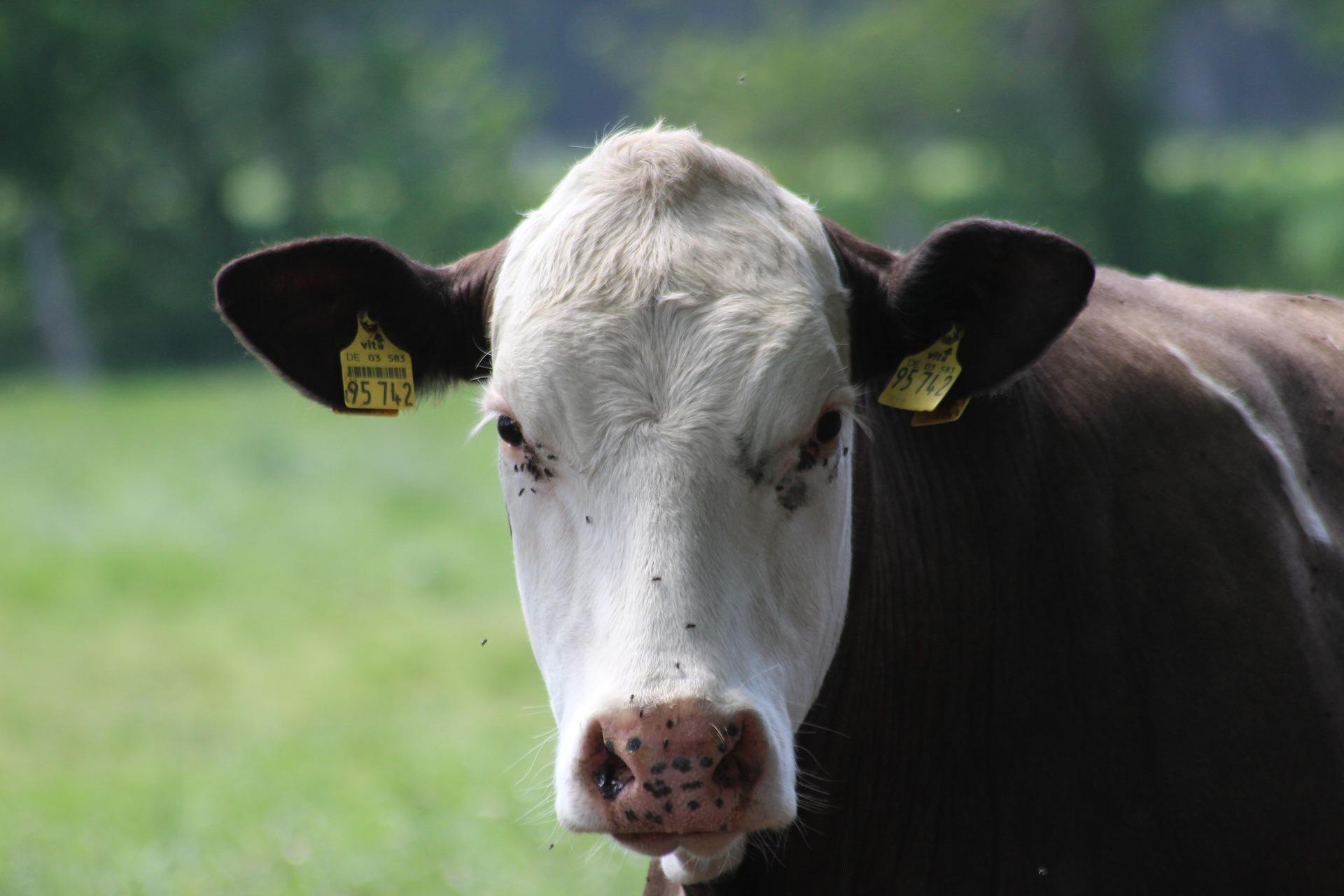Controlling Flies and Ticks in Your Livestock
Fly and tick season is here, unfortunately. But there are management methods, both chemical and environmental, that will help you better control both the fly and tick populations that are going to try and wreak havoc with your livestock. Generally, in a pasture-based setting, chemical control of flies and ticks is going to be more effective than most environmental management strategies, though an integrated approach of both is recommended.
Chemical fly control methods include fly tags, pour-ons, sprays, mists, fogs and dust (Cydectins, Ivermections, Permethrins, Pyrethriods – examples for each species listed below) that are applied directly to livestock. Fly tags are rubber or plastic ear tags that are impregnated with either a synthetic pyrethroid or organophosphate insecticide. While a very effective tool to combat flies, they are also one of the number one way to build insecticide resistance on your farm when not used properly. The most common methods to create resistance is only using one fly tag per animal vs one per ear, not tagging calves, putting tags in too early (not before early to mid-June), not removing them at the end of fly season, and not alternating the type of fly tag used every year. There are also feed additives and minerals that can help reduce flies by attacking the larvae laid in manure, though for the best results, they will need to be fed to livestock prior to and during the fly season.
As the temperatures start to rise here in Maryland, working your livestock will become more and more stressful for them. Self-apply devices such as back oilers, back and/or face rubbers and dust bags allow for the animals to have access to their own fly control - requiring less labor for you and less stress for them. For the most effective use of these devices, you’ll want to make sure they are located in “heavy traffic” or “pass through” areas of your farm. Examples of these areas are near waterers, over salt/mineral licks, hanging over alleys towards barns, pasture gates, etc. Most fly control methods are also highly effective on controlling the tick populations, including the invasive Longhorned Tick. The key to effective fly and tick control using chemical agents is to remember to re-apply the to the devices on a routine basis and to alternate type used so as not to build resistance on your farm.
Some methods of environmental management for fly control include dragging pastures to break up manure, keeping barn pens as clean and dry as possible, cleaning up spilled or spoiled feed, and using fans to circulate air as a means to discourage flies from making their way around your barn. Environmental tick control includes limiting livestock access to wooded areas and clipping tall grass along fence lines – particularly along tree-lined edges as these shaded areas make prime habitats for many tick varieties.

One management strategy to always keep in mind is how you move new animals on to your farm. Make sure to always look them over (particularly their ears, neck and chest/brisket areas) to make sure they aren’t carrying any ticks or other external parasites that could spread around your farm, keep them isolated for two weeks from the rest of your animals, and spray or use a pour-on that will help to kill any external pests you may have missed.
Controlling flies and ticks is an important part of good livestock management. Help make this fly and tick season more successful by getting into a management routine that works for your farm.
Examples of Chemical Fly and Tick Controls for Different Livestock Species:
-
Beef Cattle: Bayer Permectrin II, Gordan’s Livestock Backrubber & Pour-on, Agri-labs Vet Gun and Vet Caps, Tarter Super-duty Cattle Mineral, Ivermectin Pour-on, Prozap VIPInsect Spray, Boss and Ultra Boss Pour-ons, Python Livestock Dust, Cydectin Pour-on, Ivermax
-
Sheep: Python Livestock Dust, Boss and Ultra Boss Pour-ons, Absorbine Flys-X Ready-to Use Insecticide, Gordon’s Goat and Sheep Spray, Synergize DeLice Pour-on, Purina Sheep Mineral with Clarifly, Fly Off, Crovect, Dysect Sheep Pour-on
-
Goats: Python Livestock Dust, Gordon’s Goat and Sheep Spray, Boss and Ultra Boss Pour-ons, High Octane Fly Control Show Feed, Gordons Permethrin 10, Bug Check, Revenge Dust-On Fly, Lice and Tick Control
More Beef Resources Printer Friendly Version
This article appears on the June 8, 2021, Volume 2, Issue 2 of the Maryland Milk Moo's newsletter.
